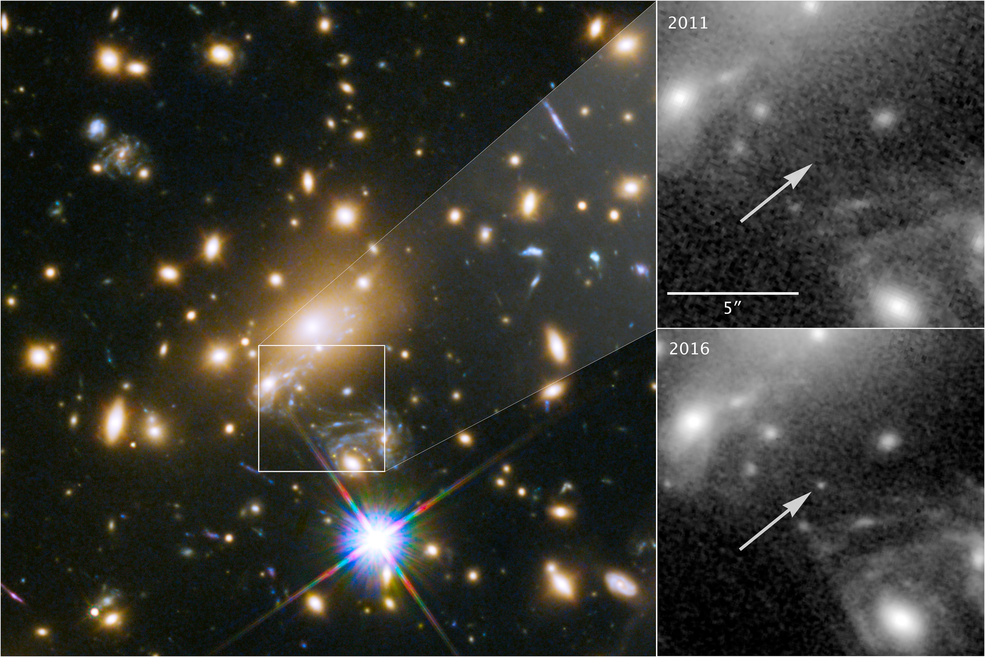LOS ANGELES, March 30 (Xinhua) -- NASA's Hubble Space Telescope has detected the light of a star that existed within the first billion years after the universe's birth in the Big Bang - the farthest individual star ever seen to date.

Icarus, whose official name is MACS J1149+2223 Lensed Star 1, is the farthest individual star ever seen. It is only visible because it is being magnified by the gravity of a massive galaxy cluster, located about 5 billion light-years from Earth. Called MACS J1149+2223, this cluster, shown at left, sits between Earth and the galaxy that contains the distant star. The panels at the right show the view in 2011, without Icarus visible, compared with the star's brightening in 2016. (Photo: NASA)
The finding has established an "extraordinary new benchmark," said NASA on Wednesday.
The newly detected star is so far away that its light has taken 12.9 billion years to reach Earth, according to NASA.
"We almost didn't believe it at first, it was so much farther than the previous most-distant, highest redshift star," said astronomer Brian Welch of the Johns Hopkins University in Baltimore, lead author of the paper describing the discovery, which is published in the journal Nature on Wednesday.
The magnified star has been nicknamed "Earendel," which means "morning star" in Old English.
The discovery holds promise for opening up an uncharted era of very early star formation, said NASA.


